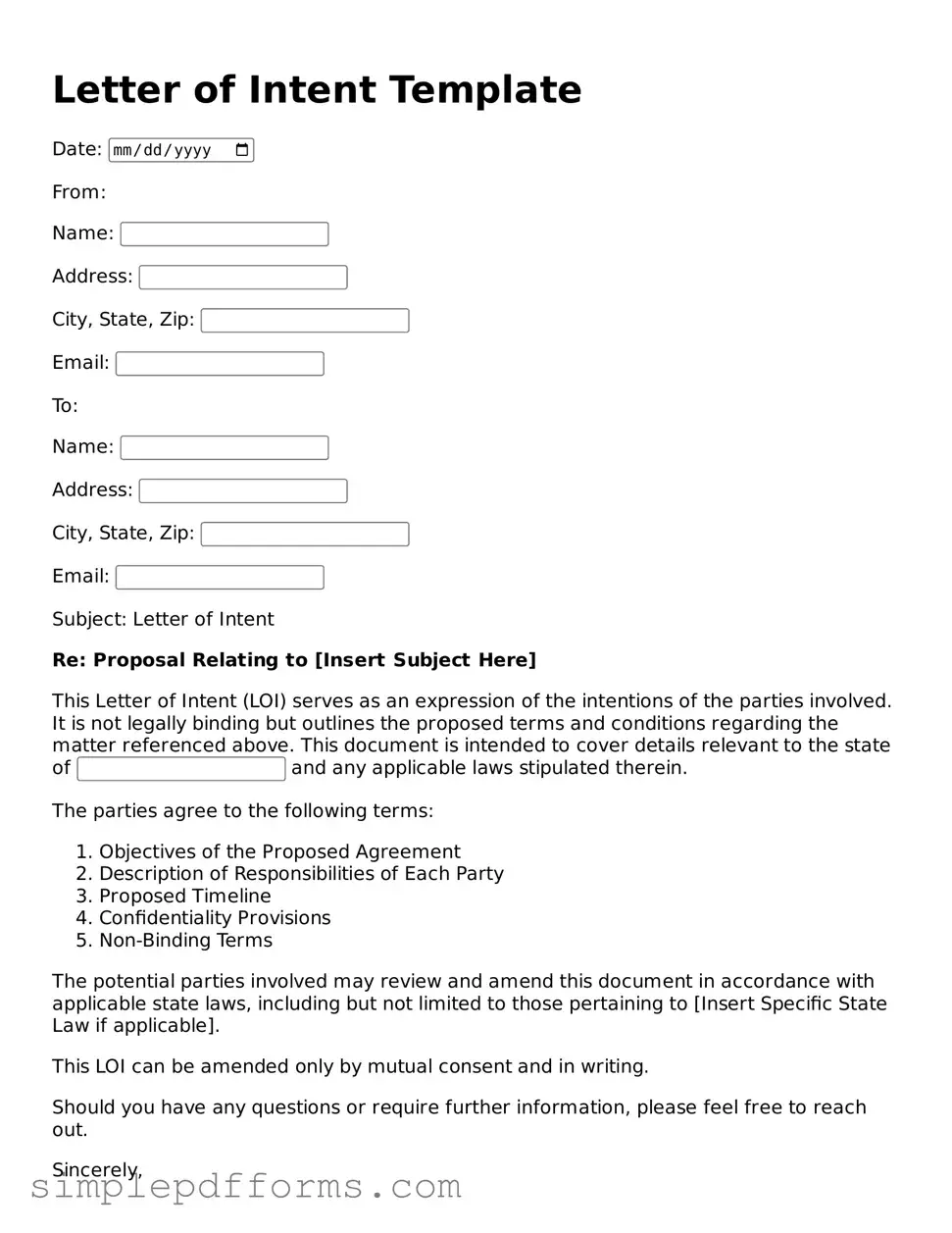Free Letter of Intent Form
A Letter of Intent is a document that outlines the preliminary understanding between two parties before a formal agreement is finalized. This form serves as a way to express interest in entering into a contract and can help clarify the intentions of each party involved. It is often used in various contexts, such as business negotiations, real estate transactions, or academic admissions.
Open Letter of Intent Editor Now
